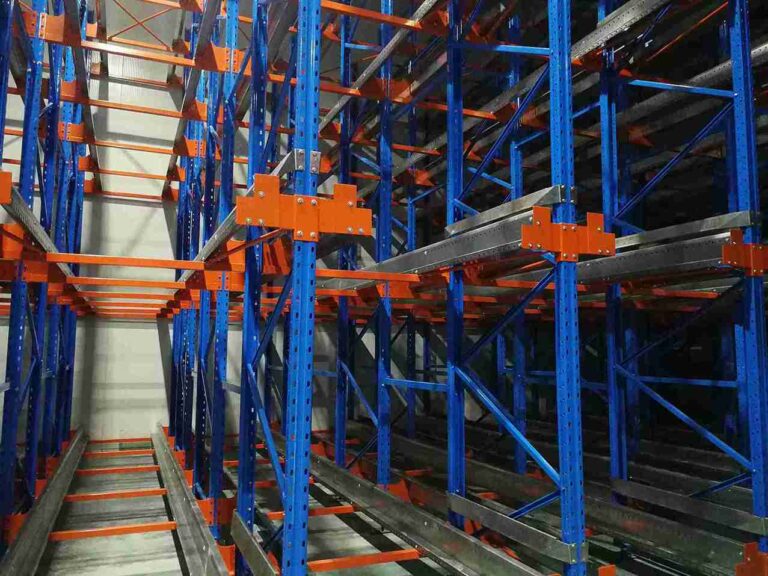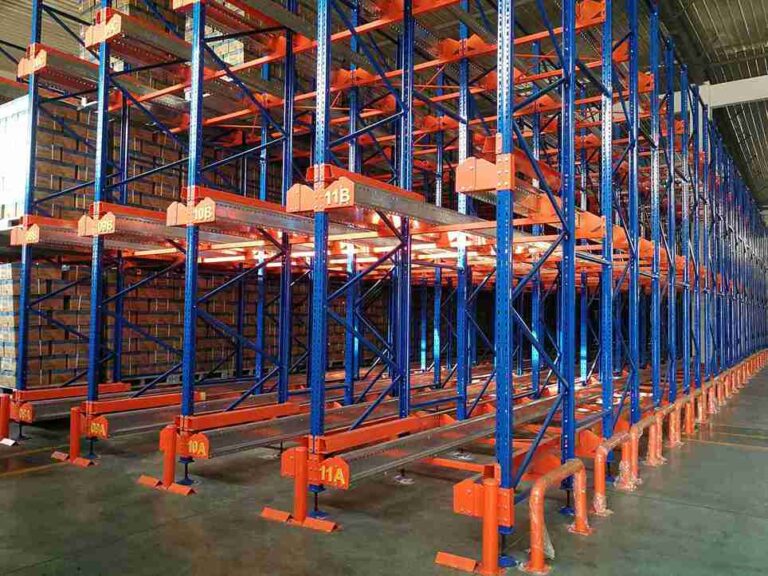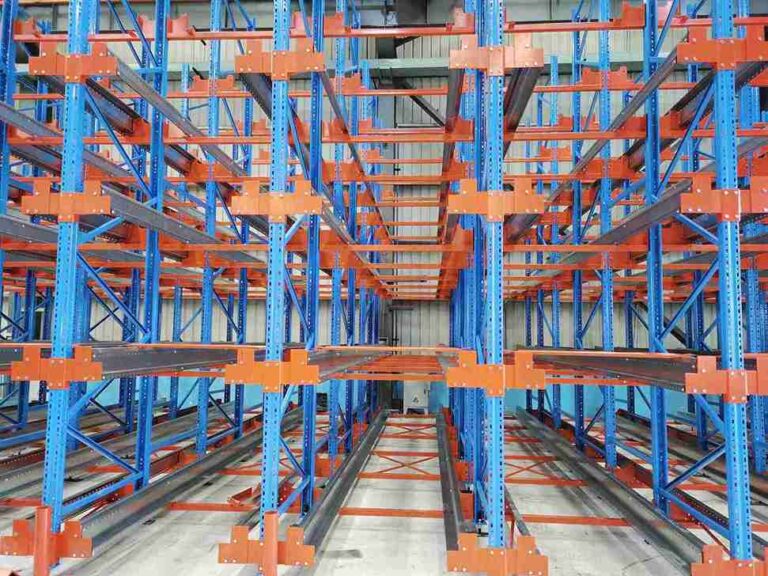📐 "First 50 Enterprise Queries Get Custom 3D Warehouse Design" Plan

Introduction: Why Shuttle Racking is a Smart Investment for Modern Warehouses
In today’s competitive logistics landscape, businesses constantly seek ways to enhance storage efficiency, reduce operational costs, and improve supply chain performance. Among the most transformative solutions available, shuttle racking investment benefits stand out as a high-return strategy for warehouses looking to optimize space, automate workflows, and boost profitability.
Unlike traditional storage systems, shuttle racking leverages automated or semi-automated shuttle carts to store and retrieve pallets with minimal human intervention. This technology increases storage density, accelerates order fulfillment, and reduces labor dependency, making it one of the most lucrative investments for high-volume warehouses.
This in-depth guide explores the top shuttle racking investment benefits, compares it with conventional systems, and provides actionable insights for businesses considering this high-efficiency storage solution.

H1: Understanding Shuttle Racking & Its Core Advantages
H2: How Shuttle Racking Works – A Breakdown
Shuttle racking investment benefits begin with its innovative operational model. The system uses motorized shuttle carts that glide along rails within deep storage lanes, autonomously transporting pallets in and out of storage positions.
- Semi-automated systems require an operator to position the shuttle cart at the lane entrance.
- Fully automated systems integrate with Warehouse Management Software (WMS) for seamless, hands-free operation.
H2: Key Components That Drive Shuttle Racking Investment Benefits
- Shuttle Cart – The automated workhorse that moves pallets efficiently.
- Rails & Guide Tracks – Ensure smooth, precise movement within storage lanes.
- Control System / WMS Integration – Enables real-time inventory tracking and optimized retrieval sequences.
- High-Density Racking Structure – Designed for ultra-deep storage (30+ pallets deep) without sacrificing accessibility.
H1: Top 10 Shuttle Racking Investment Benefits for Warehouses
H2: 1. Unmatched Storage Density & Space Optimization
One of the most compelling shuttle racking investment benefits is its ability to maximize storage capacity. By eliminating unnecessary aisles, warehouses can store up to 60% more pallets compared to selective racking.
- Deep-lane configurations minimize wasted space.
- Vertical stacking leverages full warehouse height.
H2: 2. Dramatic Labor Cost Reduction
Since forklifts no longer need to enter storage lanes, businesses can cut labor costs by up to 50%.
- Fewer forklift operators required.
- Reduced manual handling lowers workplace injuries and insurance costs.
H2: 3. Faster & More Efficient Order Fulfillment
Shuttle racking investment benefits include 30-50% faster load/unload times due to automated sequencing.
- FIFO (First-In, First-Out) or LIFO (Last-In, First-Out) options available.
- No waiting for forklifts means continuous workflow.
H2: 4. Enhanced Inventory Accuracy & Traceability
With WMS integration, shuttle racking provides:
- Real-time pallet tracking for zero misplaced stock.
- Automated reporting reduces human errors in inventory management.
H2: 5. Improved Workplace Safety & Reduced Product Damage
- No forklifts in aisles = fewer accidents.
- Gentle pallet handling minimizes product loss due to mishandling.
H2: 6. Scalability for Growing Warehouses
Shuttle racking investment benefits include modular expansion, making it ideal for businesses planning to scale.
H2: 7. Energy Efficiency & Lower Operational Costs
Electric shuttle carts consume far less power than traditional forklifts, reducing long-term energy expenses.
H2: 8. Ideal for Cold Storage & Sensitive Environments
- Minimized human presence in freezers improves temperature stability.
- Faster operations reduce cold air loss, saving energy.
H2: 9. Higher ROI Compared to AS/RS (Automated Storage & Retrieval Systems)
While AS/RS systems are expensive, shuttle racking investment benefits deliver similar automation advantages at a fraction of the cost.
H2: 10. Future-Proofing Warehouse Operations
As automation and AI-driven logistics evolve, shuttle racking integrates seamlessly with next-gen warehouse technologies.
H1: Shuttle Racking vs. Traditional Storage Systems – A Cost-Benefit Analysis
H2: Shuttle Racking vs. Selective Pallet Racking
| Feature | Selective Racking | Shuttle Racking |
|---|---|---|
| Storage Density | Low | High (60%+ more capacity) |
| Labor Dependency | High (forklift-heavy) | Low (automated) |
| Operational Speed | Slower (manual handling) | Faster (automated retrieval) |
| Long-Term ROI | Moderate | High |
H2: Shuttle Racking vs. Drive-In Racking
- Drive-in racking requires forklift entry, increasing accident risks.
- Shuttle racking eliminates forklift dependency, improving safety and efficiency.
H1: Industries That Gain the Most from Shuttle Racking Investment Benefits
✔ Food & Beverage – High turnover, FIFO compliance, perishable goods.
✔ Pharmaceuticals – Precise inventory control, batch tracking.
✔ E-Commerce & Retail – Fast order fulfillment, high SKU volumes.
✔ Automotive & Manufacturing – Bulk part storage, just-in-time logistics.
H1: How to Choose the Right Shuttle Racking System for Maximum ROI
H2: Key Factors to Consider Before Investing
- Pallet dimensions & weight capacity – Ensure compatibility.
- Warehouse height & layout – Optimize for deep-lane storage.
- Automation level needed – Semi-automated vs. fully automated.
- Budget & expected ROI – Calculate payback period.
H2: Best Practices for Implementation
- Conduct a storage audit to determine optimal configuration.
- Train staff on shuttle cart operation and WMS integration.
- Partner with an experienced supplier for customized solutions.
H1: Conclusion – Why Shuttle Racking is a High-Value Investment for Modern Warehouses
The shuttle racking investment benefits make it a game-changing solution for businesses seeking higher efficiency, lower costs, and scalable growth. By reducing labor dependency, maximizing storage space, and improving operational speed, shuttle racking delivers exceptional ROI—making it a must-have for competitive warehouses.
Companies that adopt this technology gain a strategic advantage, ensuring they remain agile, cost-efficient, and future-ready in an increasingly automated logistics landscape.
H1: Frequently Asked Questions (FAQs) About Shuttle Racking Investment Benefits
H2: 1. What is the typical ROI period for shuttle racking?
Most businesses see a full return on investment within 2-4 years due to labor savings and efficiency gains.
H2: 2. Can shuttle racking be retrofitted into existing warehouses?
Yes, but structural modifications may be needed to support deep-lane storage configurations.
H2: 3. How does shuttle racking improve inventory accuracy?
By integrating with WMS, it provides real-time tracking, reducing human errors in stock management.
H2: 4. Is shuttle racking suitable for small or medium-sized warehouses?
While most beneficial for high-density storage, smaller operations can still achieve cost savings with semi-automated systems.
H2: 5. What maintenance is required for shuttle racking systems?
- Regular battery checks for shuttle carts.
- Rail cleaning and alignment inspections.
- Software updates for optimal performance.




